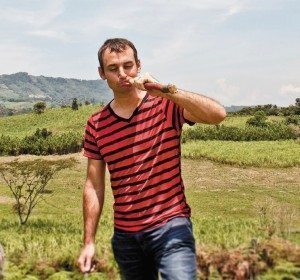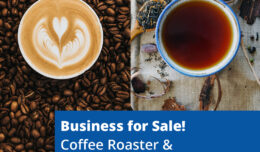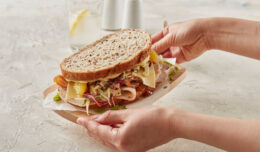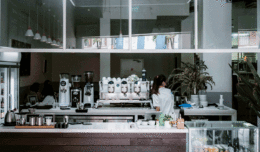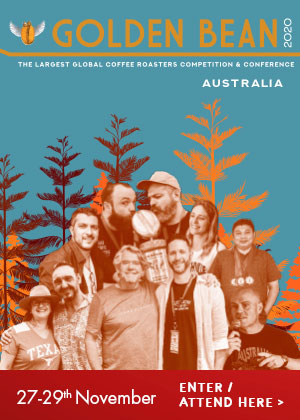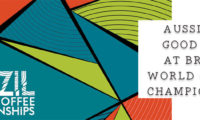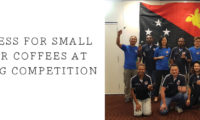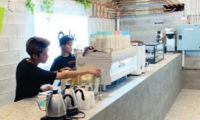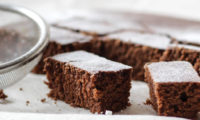While coffee roasters and café owners alike probably wish their coffee was appreciated by customers without sugar, the reality is that the majority of consumers add sweeteners to their coffee. However, few coffee roasters and baristas have tested the effect that sugar has on their coffee blend.
Harvesting the cane is a labour intensive but simple process. The cane is cut with a machete close to the base of the plant, then stripped of its leaves. The leaves are left to decompose on the field once removed from the cane, providing protection and nutrients for the soil. The stripped cane is then bundled and placed on horseback, where it is carried back to the factory ready for processing. While observing this process, I was fortunate to be able to taste sugar juice directly form the cane – it was amazing how flavoursome and moreish the juice was, without being sickly sweet – paired with a pleasurable energetic lift.
The process of extracting the juice from the cane and turning it into powder is also a labour intensive but simple process. The sugar cane is crushed to extract the juice, a sweet pale green liquid that is then passed through a filter, where large impurities are removed. The juice is then transferred through a series of heating vats, where the temperature is slowly increased. In the first vat, the resin from the bark of a local tree is added to the juice, which coagulates the impurities and brings them to the surface. The scum that forms is then skimmed from the surface, then the juice is transferred to the next vat, where it is heated further. Calcium is then added to neutralize the acidity of the juice; it is passed through strainers into hotter vats, where the moisture is further removed, leaving a thick, bubbling syrup.
The hot syrup is then left to cool, where it crystalizes into powdery clumps of Panela. The Panela is then sieved to create a coarse and fluffy golden powder. The dried Panela can then be placed into cubes, sachets, or even flavoured. The moisture content of the Panela is then sometimes further reduced, to create a more intense caramelized flavour, by baking the granulated Panela in ovens. The Panela is then packaged into bulk bags and made ready for transport.
I was quite taken back by how simple and raw the whole process was. It wasn’t until I studied how white sugar and raw sugar was made that I began to understand why Panela tasted so different. Panela is simply the powder that is left when whole sugar cane juice is evaporated. Much of the nutrients, impurities and flavour of the sugar cane is preserved. Perhaps for this reason, Panela is considered more than just a sweetener, but a drink in its own right in Colombia. Aqua Panela is a very popular drink, made by dissolving a cube of Panela in hot water and adding a squeeze of lime. The beverage is considered quite wholesome and nutritious.
Soon after my return to Australia, I was fortunate to have a chance meeting with an engineer who had worked for a large sugar refining company in New Zealand. I shared what I had discovered from my visit, and he explained that the process of making refined sugar was quite sophisticated. He explained that the fine crystallization that can be observed with refined sugar was only possible through the removal of impurities.
The process for making raw sugar begins in a similar process to Panela, with the cane being harvested and crushed to extract the cane juice. Calcium hydroxide and carbon dioxide are added to clarify the juice, by creating insoluble calcium compounds. The calcium hydroxide also raises the juice’s pH. With the addition of poly acrylamides, the impurities are filtered from the juice. The juice is then treated with activated carbon and sent through an evaporator to remove water and causing the juice to thicken. The juice is heated in a vacuum, and fine seed crystals are added to aid in the formation of sugar crystals. The mother liquor is separated from the sugar crystals, which is then made into molasses, and a centrifuge is used to obtain raw sugar.
To make white sugar, the raw sugar is then melted down again through a process called affination, that dissolves the remaining molasses. The sugar is then washed, clarified and de-coloured using phosphoric acid and calcium hydroxide or with calcium dioxide. The final stage is to boil the solution one last time to concentrate it into white granulated sugar crystals.
So now I understood why Panela had a less acidic sweetness than raw and white sugar, but I still didn’t understand why when I had compared white and raw sugar in an espresso with Panela, the flavour balance of the espresso containing refined sugar seemed to deteriorate more the longer that it was left to sit. Panela seemed to maintain the overall balance of the coffee blend and sometimes enhance it. The sharp sweetness of refined sugar seemed also to diminish the complexity of the coffee it is placed in.
To be honest, I believe further investigation is required to find the cause of these changes, probably with the assistance of a food chemist who can identify the chemical reactions taking place in the coffee. I suspect that a chemical or additive used in refining is reacting negatively with the coffee, as there is often a synthetic flavour that can be observed. That said, I noticed similar but less pronounced changes even with organic raw sugar. It has also been suggested to me that the anti caking agents often blended with the sugar to preserve the free-flowing nature of refined sugar could be a contributing factor.
Whatever the cause, I encourage you to experiment with different sugars in your café or coffee roastery, to see how the sweetener affects the balance and flavour of your coffee. Choose one that best complements and maintains the balance of your blend and improves the overall appeal of your coffee. Common sense suggests that it is the last impression associated with the final sip that will be a deciding factor in whether the customer will purchase a second cup of coffee. So why not conduct your own experiment now?
To compare the effect of different sugars on your coffee, I recommend that you use the following method:
1. Make 4 espressos, and in each one place a different sweetener (artificial sweetener, white sugar, raw sugar and panela).
2. Stir the sweetener in and take a small sip; pay attention to the tactile and flavour balance. Give the coffee a rating and record your comments.
3. Wait 40 seconds, then take a second sip. Again, make some comments about the tactile and flavour balance of the coffee and give the coffee a rating.
What did you find? I will be keen to hear about your findings! Email me at nwakeford@somage.com.au If you are interested to learn more, you can find a video of Panela production in Colombia at www.somage.tv.
ABOUT THE AUTHOR
Nathan Wakeford is the Managing Director of Somage Fine Foods, a company committed to pioneering improved product quality and knowledge in foodservice venues. Nathan has been a previous Chair of the Victorian Chapter of AASCA, a sensory judge and barista championship competitor. Nathan is also a founder of the Specialty Tea Association of Australia and a regular contributor to industry publications and media supporting the hospitality industry.


